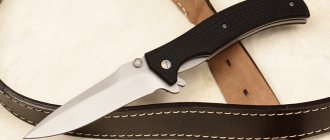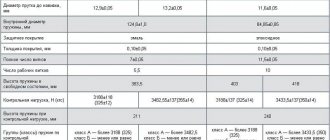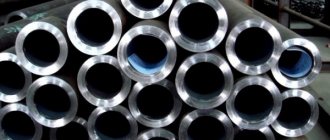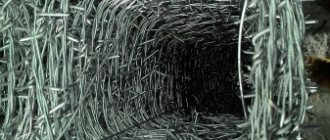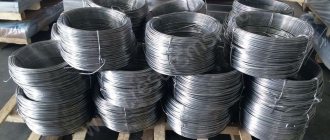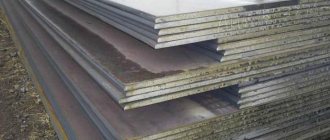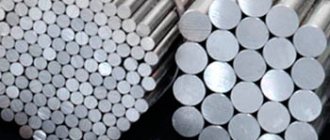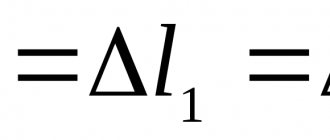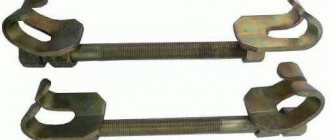According to experts, it is possible to produce a spring with high performance characteristics and in compliance with all necessary parameters only using special factory equipment. Nevertheless, the technological process itself is not complicated.
The question of how to make a spring at home is quite relevant. This is due to the fact that there are situations when the home craftsman may not have a spring of the required diameter at hand. In this case, you have to make it yourself. How to make a spring with your own hands? What tools are needed for this? You will find information on how to make a spring at home in this article.
About the diameter
How to make a spring? What wire diameter should I choose? Experts recommend using consumables with a diameter of no more than 0.2 cm. Due to the fact that such wire bends easily, it does not require preliminary heat treatment. Before winding onto the mandrel, it is unbent and carefully aligned. When choosing the diameter for the mandrel, you should proceed from the dimensions of the future spring. In other words, the internal cross-section of the product must be taken into account. Many craftsmen compensate for elastic deformations of the wire by selecting mandrels of obviously smaller diameter. When working with wire thicker than 0.2 cm, difficulties often arise when winding it onto the mandrel. In this case, you will have to perform preliminary annealing.
Where should I start?
Experts recommend using wire from an old spring whose diameter does not suit the owner. The craftsman will only have to align it and wind it onto a mandrel with a cross-section of the required size. To do this, the wire must be absolutely straight. It will be much more plastic if it is processed in a special oven. If you don’t have one, any other device that can be heated with firewood will do. According to experienced craftsmen, birch provides sufficient heat for firing. After lighting the stove, you need to wait for the wood to burn in it. Only coals should remain. You should put the old spring in them. If the product is hot enough, it will turn red. Now the spring can be moved to the side so that it cools in the air. After this procedure, the metal will become plastic and easy to work with.
SPRING - ON LATHE?
Yes, on any lathe with a hollow spindle you can wind a spring with a diameter of up to 12 mm from wire with a thickness of 0.1 to 2 mm.
Moreover - any length. All this is ensured by a simple device introduced by NTTM participants at the Leningrad Order of the Red Banner of Labor plant of lifting and transport equipment named after S. M. Kirov. Unlike similar devices, here the wire feed unit, thanks to an ingenious solution, is available for self-production even in rural workshops. The main part of the device is a pipe with a longitudinal groove. It is mounted in the tailstock of the machine or in a bracket mounted on a frame equipped with a headstock and equipped with a motor.
A shuttle with a sleeve is inserted into the longitudinal groove of the guide pipe, the diameter of which is slightly less than the internal diameter of the pipe. This allows the shuttle to move freely along the groove. A feed tube is passed through the shuttle at an angle to the axial bushing, through which the wire is passed. And it is wound onto a mandrel rod passing inside the pipe through the shuttle bushing. Depending on the desired diameter of the spring being manufactured, the rod can also be used in different diameters. At one end it is attached to a sleeve mounted movably on a bearing at the end of the pipe. And the other is clamped together with the end of the wire in the collet chuck of the headstock of the machine. The collets can also be replaced depending on the selected diameter of the mandrel rod.
The device works as follows. The chuck handle opens the collets, and a mandrel with the end of the wire passed through the shuttle is clamped into them. When the engine is turned on through a gearbox that provides 530, 760, 990 and 1420 rpm on the spindle, the wire begins to wind onto the mandrel, and each new turn rests against the shuttle bushing, moving it along the pipe and thereby ensuring uniform winding of new turns.
Device for winding springs:
1 - bed, 2 - tailstock, 3 - end sleeve, 4 - mandrel rod, 5 - coiled spring, 6 - collet handle, 7 - spindle, 8 - gearbox, 9 - chopping device
Trolley table with attachment:
1 - handle, 2 - drum with wire, 3 - pull-out chair.
How to make a spring?
After waiting until the old product has cooled down sufficiently, they begin to unwind it. Absolutely straight wire should be wound onto the mandrel. For those who do not know how to make a spring, experts recommend placing the coils close together. At this stage, the master will have to make physical effort. The mandrel is clamped in a bench vice.
The work will be much easier if you use pliers. Judging by the reviews of experienced craftsmen, very often beginners have difficulty selecting the size of the mandrel. It is possible that you will have to work not with one mandrel, but with several with different sections. The diameter for a homemade spring in this case is selected experimentally.
How to make your own spring
Looking at the sketch under the title of the article, you can guess, without unnecessary hints, how at home you can independently make a spring from elastic steel wire with a low deformation coefficient.
The figure below the number “2” shows the “jaws” of the vice, through which we will need to forcefully pull the wire when making a spring with our own hands.
The number “3” indicates two thin plates glued from the inside of the vice to the “jaws,” which you can make yourself before winding a spring from hard plastic like getinax. Then, when winding the coils of the spring, a groove will not be cut into them.
But, if you use a table vice with smooth clamping jaws to make a spring, then it is not necessary to place plates between them.
The number “4” indicates steel elastic spring wire. The number “5” is assigned to the rotating device itself, on the rod of which the spring will be wound.
A homemade rotary device is a small copy of a car engine start handle, which can also be made independently from a welding electrode or rigid wire of the required diameter.
A slot must be cut in the middle of the end of the rod (see position “1”). Otherwise, we will not be able to secure the end of the wire in order to begin making the spring. The cut in the end of the rod before winding the spring can be made with a slotted cutter or a hacksaw.
In order to make a spring from a relatively thick wire, the bend of the vertical component of the handle (indicated by the number “5”) should be lengthened. Then the shoulder of the handle will increase and it will be easier for our own shoulder to work.
A handle for self-winding a small spring can be made from an ordinary long nail, cutting it off on both sides and bending it as shown in the sketch.
Hardening of the product
For those who are interested in how to make a spring themselves, experienced craftsmen also advise paying attention to its hardening. This procedure consists of heat treatment of the product in order to give it the required elasticity.
A spring that has undergone hardening becomes much harder and more durable compared to its original state. Heat treatment is performed in special furnaces at temperatures from 830 to 870 degrees. You can also cope with this work at home using a regular gas burner. Since there are usually no temperature sensors in such devices, the home craftsman will have to control the process visually. The color of the item being heated can be used as a guide. When heated to 800 degrees, the metal turns cherry red. This means that it is too early to remove the product from the oven. If the spring is hot enough (870 degrees), it will turn light red. Now it should be cooled. Transformer or spindle oil is suitable for this purpose. In special factory thermal furnaces, metals are heated to 1050 degrees. Products at this temperature regime acquire orange shades.
Read also: Stress concentrators on connecting rods of internal combustion engines
Final stage
After the hardening procedure, the spring should be compressed and left in this position for two days. Then, using a sharpening machine, its ends are processed. This will give the handicraft the required size. After completing all of the above steps, the spring is considered ready for use. According to experts, homemade products cannot be compared with similar factory-made products.
However, non-standard springs are widely used in various mechanisms. If they are used in a gentle manner, the springs will last quite a long time.
Most often, the question of how to make a spring yourself, using improvised means, does not arise. However, there are situations when a spring of the required diameter is not at hand. It is in such cases that the need arises to make this element with your own hands.
Making a small spring is quite possible
Of course, springs for critical mechanisms operating under intensive conditions are best manufactured in production conditions, where it is possible not only to select correctly, but also to comply with all the parameters of the technological process. If you need a non-standard spring for use in a mechanism that will be operated in a gentle mode, then you can make it at home.
What you need
To make your own spring, prepare the following supplies and equipment:
- steel wire, the diameter of which should correspond to the cross-sectional size of the turns of your future spring product;
- a regular gas burner;
- a tool that every locksmith workshop must have;
- bench vice;
- a stove, which can also be used as a heating device for household purposes.
It is easier to wind a spiral using devices, the design of which depends on the size and stiffness of the spring
The wire, if its diameter does not exceed 2 mm, does not need to be subjected to preliminary heat treatment, since it is easy to bend without it. Before winding such wire onto a mandrel of the required diameter, it must be unbent and carefully aligned along the entire length of the winding.
When choosing the diameter of the mandrel, you should take into account the size of the spring that you are going to make at home. To compensate for the elastic deformation of the wire, the diameter of the mandrel is chosen slightly smaller than the required size of the internal cross-section of the future product.
Coil spring winding device
If the diameter of the wire from which you are going to make a spring with your own hands is more than 2 mm, it must first be annealed, since without such a procedure it will be difficult to align it and wind it onto the mandrel.
Calculation No. 2.
On sheet “Calculation No. 2” we compile a program that will calculate the diameter of the mandrel, taking into account the real (measured) strength properties of the round wire material.
Initial data:
1-3. We fill cells D3...D5 with the same data as in the previous calculation.
4. Elastic modulus (Young’s modulus) of wire material E
We enter in n/mm2
to cell D6: =215000
5. Tensile strength of the wire material from the table of the corresponding GOST or TU [ σ in ]
in n/mm2 we enter
to cell D7: =1600
6. Elongation at break of wire material according to GOST or TU εv
write in %
to cell D8: =10,0
7. True (measured during real tests) stress at wire break σ 0
in n/mm2 we enter
to cell D9: =1700
8. True elongation at break ε0
in % corresponding to voltage
σ0,
we write
to cell D10: =11,0
Calculation results:
9. Average spring diameter D
in mm we define
in cell D12: =D3+D4 =25,000
D=D2+d
10. Spring index i
calculate
in cell D13: =D12/D3 =10,000
i = D / d
Attention! It is important that the condition 4
≤ i ≤ 12
. 11. Angle of elevation of the spring coil α
We calculate in radians
in cell D14: =ATAN (D5/(PI()*D12)) =0,095
α = arctan ( t / π * D )
12. Coefficient η
calculate
in cell D15: =(D9/D7-1)/(D10-D8) =0,063
η =( σ 0 /[ σ in ]/(ε0— ε in)
To determine η
it is necessary to break a wire sample in the laboratory and determine the real values
of σ 0 and ε0.
If there are no actual measurements, then for wire according to GOST 9389-75 in theoretical calculations we can accept:
η = 0.08.
13. Parameter ξ
calculate
in cell D16: =1/6+(COS (D14))^2*D15/(10*D13) =0,167
ξ =1/6+( cos ( α ))2* η /(10* i )
14. Mandrel diameter D o
in mm we calculate
in cell D18: =D4-32*(1- (D5/(PI()*D12))^2)*D7*D13*D12* D16/(PI()*D6) =19,359
D o =D2-32*(1- (t/( π *D) 2
)*
[σ in ]*i*D*ξ/( π *E)
15. Coefficient that specifies the diameter of the mandrel relative to the internal diameter of the spring k
calculate
in cell D17: =D18/D4 =0,860
k= D0
/
D2
Step-by-step instruction
The first thing you need to do if you are going to make a spring with your own hands is to select the material for such a product. The optimal material in this case is another spring (the main thing is that the diameter of the wire from which it is made matches the cross-section of the coils of the spring that you need to make).
By selecting material from an old spring, you will be sure that the wire is made of hardened high carbon steel
Annealing the wire for the spring, as mentioned above, will allow you to make it more flexible, and you can easily align it and wind it on the mandrel. To perform this procedure, it is best to use a special stove, but if you do not have one at your disposal, then you can use any other device that heats wood.
In such a stove you need to light birch wood and, when it burns down to coals, put a spring in it, the wire from which you are going to use. After the spring is red-hot, the coals must be moved to the side and the heated product allowed to cool along with the stove. After cooling, the wire will become much more flexible, and you can easily work with it at home.
Read also: Naruto and Sakura Hyundai
The wire that has become soft should be carefully aligned and begin to be wound onto a mandrel of the required diameter. When performing this procedure, it is important to ensure that the turns are located close to each other. If you have never winded springs before, you can first watch a training video, which is easy to find on the Internet.
You can use a screwdriver to wind a small spring.
In order for your new spring to have the required elasticity, it must be hardened. Heat treatment such as hardening will make the material harder and more durable. To perform hardening, the finished spring must be heated to a temperature of 830–870°, for which you can use a gas burner. You can determine that the required hardening temperature has been reached by the color of the hot spring: it should turn light red. To accurately determine this color, also rely on the video. After heating to the required temperature, the spring must be cooled in transformer or spindle oil.
Heated steel colors
After hardening, the spring should be kept in a compressed state for 20–40 hours, and then its ends should be processed on a sharpening machine to make a product of the required size.
After completing all the above procedures, you can begin to use the spring you made with your own hands for its intended purpose.
Springs are elastic structural elements that serve to accumulate or dissipate mechanical energy. They surround us on all sides - under the keys of the computer keyboard, in the car suspension and in the lifting mechanism of the sofa. The most common are coil compression springs. There are several ways to make them.
Making a spring with your own hands
To make a spring at home, you need to decide on the following characteristics:
- the grade of steel from which the product will be made;
- wire diameter;
- number of wound turns;
- turn step.
A homemade product can be made on a mandrel and using a screwdriver. You will also need nippers, a hammer, a vice, a heating source (stove, gas burner, fire), a cooling medium and additional accessories.
The simplest manufacturing method is to wind the wire onto a rod of suitable diameter by hand. In this case, it is necessary to ensure that the turns fit tightly to each other.
The process of making a spring using a screwdriver can be seen in the video:
When making a product with your own hands, you must adhere to the following simple rules:
- The wire must be absolutely straight. If the product is made from an uneven or old spring, it must be aligned.
- The wire must be free of rust, oils and other contaminants. To do this, use a soda solution or chemicals to dissolve oils and remove rust. It is recommended to wipe the wire with sawdust.
- Before coiling, wire with a diameter of more than 2 mm must be subjected to an annealing procedure by heating red-hot (temperature within 400 °C) and cooling in air.
- When winding, it is necessary to control the position of the turns relative to each other. They should fit snugly one to one.
Hardening of springs at home can be done in several ways: using a gas burner, heating in a stove made of brick or stone, or simply in a fire. Heating should be carried out to a temperature of approximately 870 °C. This is determined by eye by the color of the wire: during the heating process it becomes almost white. Then it must be placed in oil (transformer, spindle or other liquid medium), which will provide slow cooling. Let us remind you that rapid cooling can cause cracks that will negatively affect the quality of the spring.
In production conditions, springs are placed in a mesh basket, sometimes preheated (depending on the grade of steel). This basket is placed in a hardening furnace, which is heated to the required temperature and kept for a certain time in order to heat the material over the entire cross section. For the same purpose, the springs are fastened with wire or placed in a special cage. The holding time for each steel grade is calculated and selected taking into account the spring material and its diameter. In production, special diagrams are usually used. The quenching medium is also selected depending on these parameters. This can be oil, liquid quenching medium, air, etc. The liquid medium is water to which chalk, lime or soap have been added in certain quantities. The presence of these elements in the aquatic environment makes it possible to reduce the cooling rate and avoid the occurrence of cracks in the metal of the spring.
At home, a soap solution or transformer oil is usually used as a liquid medium, which is poured in sufficient quantities into a container. The springs should be completely immersed in it and cool there to room temperature.
It is recommended to keep a spring made by hand in a compressed state for some time. Typically, the holding time ranges from 20 to 40 hours.
Coil compression springs
Elastic elements can have different spatial forms. Historically, the first springs mastered by man were leaf springs. You can still see them today - these are springs on heavy-duty trucks. With the development of technology, people have learned to make more compact coil springs that work in compression. In addition to them, spatial elastic elements are also used.
Design Features
During operation, such springs take a load along their axis. In the initial position, there are gaps between their turns. The applied external force deforms the spring, its length decreases until the coils touch. From this moment on, the spring is an absolutely rigid body. As the external force decreases, the shape of the product begins to return to its original shape until it is completely restored when the load disappears.
The main characteristics describing the geometry of the part are:
- The diameter of the rod from which the spring is wound.
- Number of turns.
- Winding step.
- External diameter of the part.
The external shape may differ from cylindrical and represent one of the figures of rotation: cone, barrel (ellipsoid) and others
The winding pitch can be constant or variable. The winding direction is clockwise and counterclockwise.
The cross-section of the turns can be round, flat, square, etc.
The ends of the turns are ground down to a flat shape.
Operating area
Cylindrical coil springs of constant outer diameter and constant pitch are used more widely than others. They are used in areas such as
- Mechanical engineering.
- Instrumentation.
- Vehicles.
- Mining industry.
- Appliances .
and in other industries.
Use of springs in everyday life
Spring winding
A spring can be called any plate or spiral that is capable of springing, that is, capable of changing its original position under the influence of a certain force and restoring it after the force ceases. According to their shape, springs are divided into cylindrical, conical and spiral, and according to the type of work - into springs that work in compression, tension and torsion. In Fig. Figure 5.32 shows the most common springs - cylindrical, conical and special.
Rice.
5.32. Springs: a - cylindrical, working in compression; b - conical, tensile; c - a special spring that works for torsion; d —wire diameter; D^H
- internal diameter of the spring;
/)ts - outer diameter of the spring; t - spring pitch
A cylindrical spring is measured in two ways: by the internal diameter, if it must be seated on a rod or rod (the internal diameter of the spring must also be known to select the diameter of the mandrel when winding the spring), and by the external diameter, if the spring must be enclosed in a pipe or into any hole. The outer diameter of the spring is equal to the inner diameter plus two diameters of the wire from which the spring is made.
The average diameter of the spring is practically not measured; it serves only for technical calculations.
Springs have a pitch and length.
Step by step
is the distance between the middle (axial) lines of two turns, measured along the axis of the spring, or, in other words, the distance between the beginning and end of one turn when the spring is in a free position.
Spring length -
the distance between its ends.
When counting spring coils, only the working coils are counted.
For compression springs with unpressed ends, the number of working turns is determined by subtracting from the number of all turns one turn from each end, and 3/4 turns from each end if the outer turns are pressed and ground to form a supporting plane.
Before making a spring, determine the length of its workpiece using the formula
where / is the length of the wire blank;
D, is the average design diameter of the spring; P -
number of spring turns.
Example 1.
Determine the length of the cylindrical spring blank if the wire diameter
d =
3 mm, the internal diameter of the spring D>, is equal to 20 mm, and the number of turns of the spring is 12.
First we determine the average diameter of the spring:
Therefore, the length of the workpiece:
Example 2.
Determine the length of the cylindrical spring blank if the wire diameter is 2 mm, the outer diameter of the spring /)n is 22 mm, and the number of turns of the spring is 10.
Example 3.
Determine the length of the workpiece for a conical spring if the inner diameter of the spring at one end is 22 mm, and the outer diameter at the other end is 32 mm, the number of turns is 16, and the wire diameter is 3 mm.
Average diameter at one end:
Average diameter at other end:
Average design diameter:
Rice.
5.33. Winding the spring: a - in a vice using a hand vice or using a curved rod; b - on a lathe; c - on a drilling machine
Coiling of cylindrical springs is done in a vice (Fig. 5.33a), on a lathe (Fig. 5.336) and drilling machine (Fig. 5.33
Spring requirements
The following properties are required for the work to function effectively:
- high strength;
- plastic;
- elasticity;
- wear resistance.
To ensure the design values of these parameters, it is necessary to correctly select the material, accurately calculate the dimensions, develop and follow the manufacturing technology.
State standards determine the requirements for the manufacture of springs. According to permissible deviations, they belong to one of the accuracy groups:
Schematic representation of a spring
Strict requirements are imposed on the accuracy of geometry and surface cleanliness.
Products with scratches and other external defects that reduce the resource of the product and its service life do not meet the standard
Requirements for wire and its diameter
Steel wire for the manufacture of a spring, which will subsequently be hardened, must meet the requirements specified in GOST 14963-78. According to the document, it is classified according to the following criteria:
- winding method (cold and hot);
- method of surface finishing (without finishing and with finishing);
- manufacturing accuracy (normal and increased);
- class of mechanical properties (general and critical use);
- diameter (from 0.5 to 14 mm);
- type of delivery (in rods or coils).
At industrial enterprises, springs are made from wire with a diameter of no more than 16 mm using the cold winding method, and up to 80 mm using the hot method. In production, they are wound using a rotating mandrel, feed rollers and one or two stop pins.
Products are made from wire grades 51ХВА, 70С3А, 65С2ВА, 60С2А, 65Г, 60ХВА with a ground, polished surface or without grinding and polishing. Based on this characteristic and the manufacturing method, the wire is produced in rods or coils of the following groups:
- A, B, C, D, E – with special finishing;
- N - without finishing.
The wire symbol in the technical documentation and on accompanying tags consists of numbers and letters:
ХХХХХ (1) – Х (2) – Х (3) – Х (4) – ХХ (5) – ХХ (6) GOST 14963-78 (7)
- 1 – steel grade;
- 2 – surface finishing method;
- 3 – manufacturing accuracy;
- 4 — class of mechanical accuracy;
- 5 - winding method;
- 6 - diameter in mm;
- 7 - designation of the standard.
For example, a wire with a polished surface made of high-precision class I steel 60C2A for hot coil springs with a diameter of 2.0 mm will have the following designation:
60S2A – A – P – I – GN – 2.0 GOST 14963-78
The state standard specifies permissible maximum deviations, out-of-roundness and the inadmissibility of certain types of defects, as well as methods of packaging and transportation.
Material requirements
The strength parameters and fault tolerance of a product are largely determined by the material from which it was decided to be made. Metallurgists distinguish special spring steels in the classification of steels. They have a specific crystal structure, determined both by the chemical composition and the heat treatment of the products. Highly alloyed alloys of increased purity and high metallurgical quality provide high elasticity and ductility, and are able to retain their physical and mechanical properties after repeated deformations.
Spring alloys 60S2A, 50HFA and stainless steel 12Х18Н10Т have gained popularity among mechanism designers.
Read also: Tiger stencil for airbrush
Features of the technology
The technological process for manufacturing elastic elements depends on the technical requirements for the design. Making a spring is not as easy as an ordinary part, which should not have special elastic properties. This requires special equipment and equipment.
Winding of springs with a round coil section is carried out using the following methods:
- Cold. Suitable for small and medium sizes (wire diameter up to 8 mm).
- Hot. For large diameters.
Spring coiling technology
After winding, the elastic elements are subjected to various types of heat treatment. During this process, the product acquires the specified properties.
Hot manufacturing method
Winding springs on lathes using this method is available for the manufacture of products from bar material with a diameter of 10 mm or more. The technological process consists of a number of stages:
- trimming and subsequent heating;
- guying and rolling of ends;
- reheat;
- winding made of heated material;
- the ends of the workpiece are cut off;
- layout and straightening of the product, subsequent heat treatment;
- sharpening and grinding of ends, corrosion protection, dimensional control and testing (strength, wear resistance, etc.).
Cold coiling technology without hardening
First you need to do preparatory operations. Before a workpiece is wound from wire, it is subjected to a patenting procedure. It consists in heating the material to the plasticity temperature. This operation prepares the wire for the upcoming change in shape.
During the winding operation the following parameters must be maintained:
- External diameter of the product (for some parts the internal diameter is standardized).
- Number of turns.
- Winding pitch.
- The total length of the part, taking into account subsequent operations.
- Compliance with the geometry of the end turns.
Cold coiling without tempering
Next, the end turns are ground down to a flat state. This must be done to ensure high-quality support for other structural parts, to prevent their destruction and the spring from slipping out.
The next stage of the technological process is heat treatment. Cold coiling of springs involves only tempering at low temperatures. It allows you to increase elasticity and relieve mechanical stresses that arise during winding.
It is extremely important to strictly adhere to the design heat treatment schedule, carefully controlling temperature and holding time.
After heat treatment, it is necessary to carry out test and control operations.
Further, if necessary, protective coatings can be applied to prevent corrosion. If they were applied by galvanic method, the products are reheated to reduce the hydrogen content in the surface layer.
Winding a spring on a lathe
This is a technical process during which wire or tape is processed. The result is a coil of springs of various shapes: cylindrical, conical, shaped or flat. The main production method is the cold method. Winding of the spring is carried out on a lathe, using a special device, manually or using an automatic machine. The production of such products is also possible using the hot method, the diameter of the wire used is from 10 mm. The choice of spring winding option depends on the size and type of metal.
Cold manufacturing method
The technology of winding springs on lathes in Russia is considered more preferable. This is due to the fact that the hot method requires serious costs associated with the purchase of expensive additional equipment. The cold method has restrictions on the wire diameter; it does not exceed 16 mm. The equipment for this process consists of mandrels adapted to guide the metal thread on a rotating spool.
The type depends on the shape of the spring (cylindrical, barrel-shaped or conical). The device for tensioning and directing the wire is presented in the form of two rotating rollers. Moreover, the top one has a screw that allows you to adjust the tension and direction. When cold curling springs, metal with the necessary qualities is taken and the required part is made from it. At the end, heat treatment is carried out in order to get rid of internal stresses.
The technology itself looks like this. The steel wire is fed through a bar mounted on the equipment support, and the end is fixed with a clamp on the mandrel. The roller device exerts tension on the metal thread, which is important in the manufacture of the product. After turning on the machine, the winding of the spring begins, and the speed, depending on the diameter and material used, is in the range of 10 - 40 m/min. The number of turns is counted visually or with a counter. Upon completion, the craft is subject to mechanical processing.
This can be a technology for trimming compression springs with abrasive wheels on special machines or on industrial sharpeners. On products of other profiles, the technological ends must be trimmed or trimmed using a special device and an appropriate tool. The finished product is heat treated in electric ovens.
The technology for heat treatment of parts depends on the material. For some grades of steel, tempering and hardening are used; for others, including bronze, it is low-temperature tempering, after which the items acquire spring properties.
Finished products are checked and tested for compliance with technological parameters (tension, compression, bending, torsion). If necessary or with the consent of the customer, additional processing (galvanic, paint or other coating) is performed.
Hot manufacturing method
Winding springs on lathes using this method is available for the manufacture of products from bar material with a diameter of 10 mm or more. The technological process consists of a number of stages:
- trimming and subsequent heating;
- guying and rolling of ends;
- reheat;
- winding made of heated material;
- the ends of the workpiece are cut off;
- layout and straightening of the product, subsequent heat treatment;
- sharpening and grinding of ends, corrosion protection, dimensional control and testing (strength, wear resistance, etc.).
The workpiece is heated in a short time, and a mandatory condition must be met - uniform heating throughout the entire volume. Hot coiling requires tools and equipment (mandrel, hammers, pliers, wedges, etc.). The coiler needs to have all of the above on hand when performing work on the manufacture of springs. The mandrel is needed for winding springs on lathes, and the workpiece is secured to it using a wedge. The pliers have the shape of sponges that provide holding, installation and rotation of the part.
During the work process, you need to be guided by technological instructions that will ensure the production of high-quality products. In order to reduce waste when producing short products, a long spiral is laid on the mandrel, i.e., a blank is made for several parts. The process of winding springs on large lathes involves almost the same operation steps that are used for medium and small workpieces.
The springs obtained after coiling during operation are subject to numerous repeated loads. Therefore, they must have high elasticity characteristics and withstand a large number of repeated loads during operation without settling or breaking. The first means that the springs, after loading, must quickly restore their intended shape and size. Practice shows that the durability of a product made on a machine directly depends on the quality and cleanliness of wire processing. The surface of the springs should not have scratches, hairs, marks or other defects, as they lead to a sharp decrease in the performance of the product.
An important point for winding springs is the use of mandrels (devices), they prevent warping during hardening and tempering. Even if the part is warped during hardening, the situation can be corrected by placing it on a mandrel before the tempering procedure. For large springs, the defect obtained during hardening is difficult to correct, since in this case fixation on the mandrel is difficult. To prevent this from happening, it is necessary to carry out heat treatment of the workpiece already on it.
Device for winding springs on a lathe
With any of the two methods of winding springs on lathes, the following parameters must be ensured:
- inner, middle or outer diameter of the product;
- general and working turns, their number;
- height and pitch of the spring, taking into account subsequent processing.
If you find an error, please select a piece of text and press Ctrl+Enter.
stankiexpert.ru
Cold coiling technology with quenching and tempering
The first stages of the technology coincide with the previous process. Changes begin at the heat treatment stage. It is carried out in several stages:
- Hardening. The workpiece is heated to a given temperature and held for 2 to 3 hours. Next, it is subjected to rapid cooling by immersing it in a container with mineral oil or saline solution. During the hardening stage, the workpieces must be in a horizontal position. This will avoid deformation
- Vacation. The workpiece is heated to 200-300° and kept for several hours to relieve internal stresses and improve elastic properties.
Further measuring and control operations are also carried out. The workpieces that have passed the inspection are sent for sandblasting to remove scale. If necessary, shot blasting should also be done to increase the strength of the surface layer of the metal.
The process is completed by applying a protective coating.
Hot coiling technology with quenching and tempering
Before winding, the workpiece is heated to plasticity temperature using one of the following methods
- muffle furnace;
- gas-burner;
- high frequency heating.
Next, the workpiece is supplied to the coiling equipment. The geometry is adjusted and flat ends are formed.
Heat treatment includes hardening and low-temperature tempering.
Heat treatment schedules are constructed based on the properties of the material and the dimensions of the workpiece.
Operating mode of the quenching and tempering furnace line
Next comes the control and measuring stage. Manufacturing is completed by applying anti-corrosion protection.
Equipment and fixtures used
To make an elastic element, specialized equipment is required. These are winding machines. You can make a part on a regular lathe, but it will require additional equipment with special equipment. Medium and large series are produced on semi-automatic machines that operate with minimal operator intervention. You can also make a spring from wire by hand. This will also require special equipment.
At the next stage of machining, the ends are ground on face grinding machines. For single production or small series, this can be done with a grinding wheel.
Heat treatment is carried out using mandrels that prevent product deformation in specialized furnaces for hardening and tempering. Both operations can be done in a universal oven.
Equipment and fixtures used
For quality control, load installations and measuring systems are used. In case of single production, measurements can be made with a universal tool.
If you find an error, please select a piece of text and press Ctrl+Enter.
Calculation No. 3.
We continue the calculation in Excel and on the sheet “Calculation No. 3” we create another program with which we will calculate the diameter of the mandrel for winding a spring from a rectangular wire.
Initial data:
1. Wire width b
write in mm
to cell D3: =2,5
2. Wire height h
write in mm
to cell D4: =2,5
3. Inner diameter of spring D 2
enter in mm
to cell D5: =22,5
4. Elastic modulus (Young’s modulus) of wire material E
We enter in kg/mm2
to cell D6: =21500
5. Yield strength of wire material [ σ t ]
in kg/mm2 enter
to cell D7: =120
Calculation results:
6. Average spring radius R
in mm we define
in cell D9: =(D4+D5)/2 =12,500
R =( D 2 + h )/2
7. Bending moment M
We will read in kg*mm
in cell D10: leave the cell empty for now
8. Parameter p
we will calculate
in cell D11: =(1/D9+12*D10/(D3*(D4^3)*D6))^2*(¼-D10/(D3*(D4^2)*D7)) — (1/ 3*(D7/(D6*D4))^2)
p =(1/ R +12* M /( b * h 3 * E )2*(¼-
M /( b * h 2 *[ σ t ])) -1/3*([ σ t ]/( E * h ))2
For further correct operation, you need to configure the Excel program.
Select: “Service” - “Parameters...” - “Calculations”.
Set in the “Parameters” window that opens on the “Calculations” tab:
Limit number of iterations: 10000
Relative error: 0.000000001
To calculate the bending moment M
Let’s use the “Parameter Selection...” service.
The value of the moment M
is determined from the above equation at
p
=0.
Select: “Service” – “Selection of parameter...”.
In the “Parameter Selection” window that pops up, fill in the boxes as shown in the screenshot on the left.
Click OK.
The “Parameter selection result” window appears. If it looks like in the screenshot on the left, then click OK and read the value of the bending moment M
in kg*mm
in cell D10: =468,335
Parameter p,
which should be 0, calculated
in cell D11: =(1/D9+12*D10/(D3*(D4^3)*D6))^2*(¼-D10/(D3*(D4^2)*D7)) — (1/ 3*(D7/(D6*D4))^2) =3.6 E -10
More details about the applied method for solving a cumbersome nonlinear equation can be read in the article “Transcendental equations? “Parameter selection” in Excel!”
9. Average winding radius R n
in mm we calculate
in cell D12: =((¼-D10/(D3*D4^2*D7))/(1/3*(D7/(D6*D4))^2))^0.5 =11,536
R n =((¼-
M /( b * h 2 *[ σ t ]))/(1/3*([ σ t ]/( E * h ))2)0.5
10. Mandrel diameter Do
in mm we calculate
in cell D14: =(D12-D4/2)*2 =20,573
Do =( R n -
h /2)*2
11. Coefficient that determines the diameter of the mandrel relative to the internal diameter of the spring k
calculate
in cell D13: =D14/D5 =0,914
k= D0
/
D2
